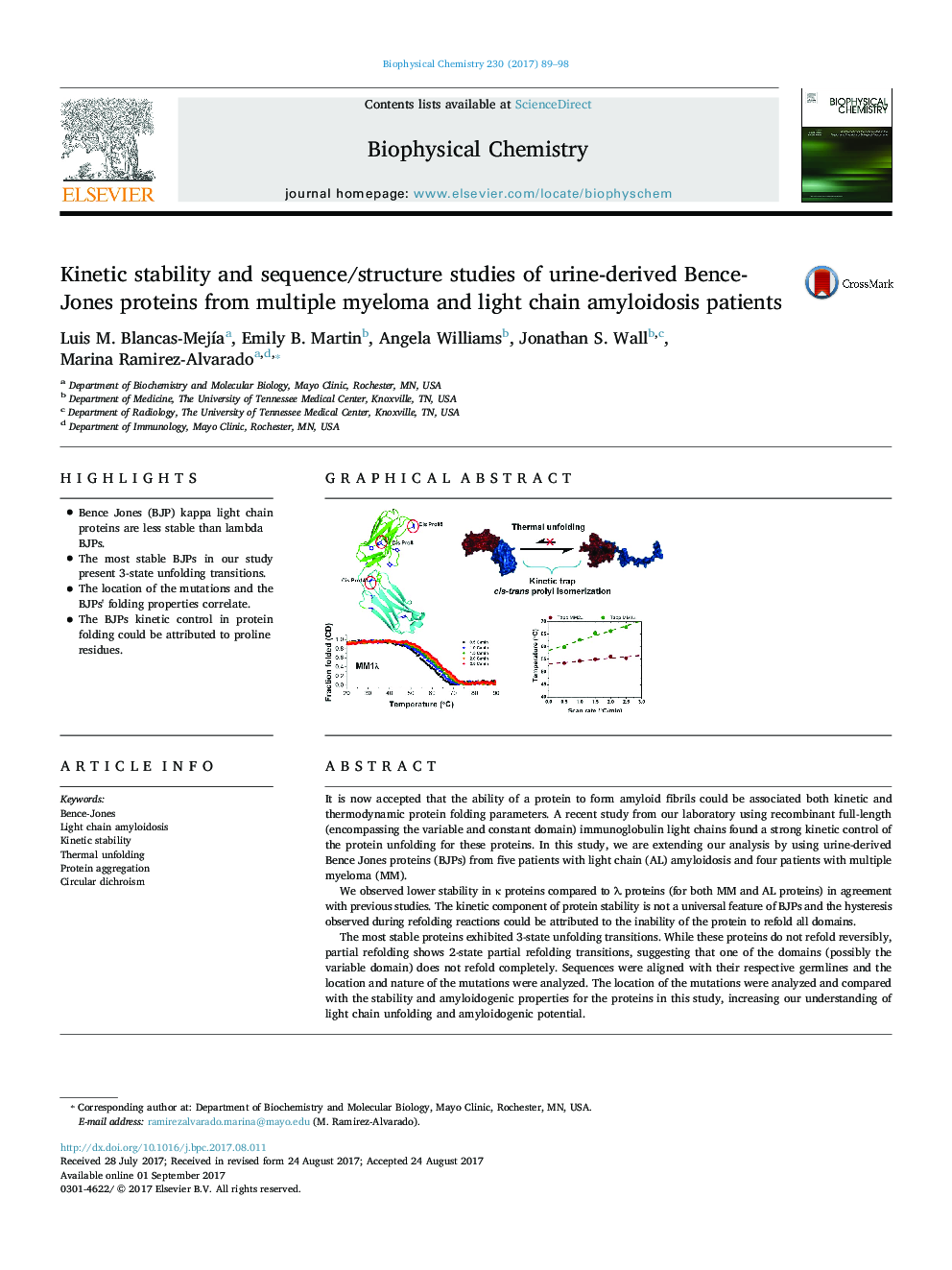| Article ID | Journal | Published Year | Pages | File Type |
|---|---|---|---|---|
| 5370579 | Biophysical Chemistry | 2017 | 10 Pages |
â¢Bence Jones (BJP) kappa light chain proteins are less stable than lambda BJPs.â¢The most stable BJPs in our study present 3-state unfolding transitions.â¢The location of the mutations and the BJPs' folding properties correlate.â¢The BJPs kinetic control in protein folding could be attributed to proline residues.
It is now accepted that the ability of a protein to form amyloid fibrils could be associated both kinetic and thermodynamic protein folding parameters. A recent study from our laboratory using recombinant full-length (encompassing the variable and constant domain) immunoglobulin light chains found a strong kinetic control of the protein unfolding for these proteins. In this study, we are extending our analysis by using urine-derived Bence Jones proteins (BJPs) from five patients with light chain (AL) amyloidosis and four patients with multiple myeloma (MM).We observed lower stability in κ proteins compared to λ proteins (for both MM and AL proteins) in agreement with previous studies. The kinetic component of protein stability is not a universal feature of BJPs and the hysteresis observed during refolding reactions could be attributed to the inability of the protein to refold all domains.The most stable proteins exhibited 3-state unfolding transitions. While these proteins do not refold reversibly, partial refolding shows 2-state partial refolding transitions, suggesting that one of the domains (possibly the variable domain) does not refold completely. Sequences were aligned with their respective germlines and the location and nature of the mutations were analyzed. The location of the mutations were analyzed and compared with the stability and amyloidogenic properties for the proteins in this study, increasing our understanding of light chain unfolding and amyloidogenic potential.
Graphical abstractDownload high-res image (256KB)Download full-size image
